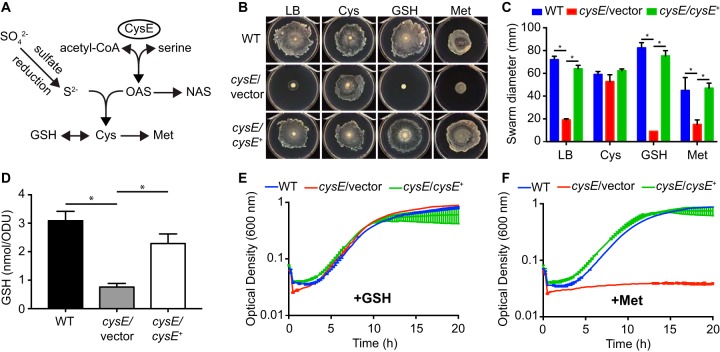FIG 1.
Cysteine limitation prevents swarming motility of S. marcescens. (A) Model of sulfate assimilation and cysteine biosynthesis derived from established pathways in E. coli. Intermediate steps in the glutathione (GSH), methionine, and sulfate reduction pathways are not depicted. (B) Representative images of swarming motility for S. marcescens strains on soft agar plates. Wild-type (WT), cysE mutant (cysE/vector), and the complemented mutant (cysE/cysE+) strains were spotted onto the surfaces of LB agar plates or LB agar supplemented with 1 mM cysteine, glutathione, or methionine and allowed to swarm for 16 h. (C) Quantitation of swarming motility. The swarm zone diameters were determined for triplicate cultures and the mean diameters (± standard deviations) are presented. *, P < 0.01 by t test. (D) Total intracellular glutathione from bacteria cultured in LB was measured for each strain and normalized to the culture optical density. Bars represent the means (± standard deviations) from triplicate cultures. *, P < 0.01 by t test. (E) Growth of S. marcescens strains in M9 medium supplemented with 1 mM glutathione. Growth was measured by optical density in 15-min intervals. Values represent the means (± standard deviations) from triplicate cultures. (F) Growth of S. marcescens strains in M9 medium supplemented with 1 mM methionine as described for panel E.

